3DWarehouse

'09 Kateshikato Jeto A-Race/B-Race
by 3DWarehouse
Last crawled date: 10 months, 1 week ago
After a 15-year hiatus of their famous jet-petrol hybrid Jeto, they decided to revive the name and release a new modernized version. The new car had a ton of improvements, which included a new redesign with smooth lines and creases in order to generate more downforce while reducing drag coefficent by .04g (original was 0.33g). New LED lights were fitted which produced significantly brighter light than the composite lights the original used (and way brighter than the sealed beams of the pre-facelift) and the old 'square-scale' driving assist option was replaced with GPS driving assists, which included millions of locations and worked worldwide but was much more expensive. On the top of the radio there was an alarm-clock like LCD screen telling the temperature, mileage, heat and percentage of remaining fuel.The driving assists also became smarter, reducing the speed when one is about to go off-road, and also became more autonomous by shifting by itself. A small portion of the trunk and roof pillars were made out of opaque body-colored lightweight carbon fibre, creating high visibility at the cost of reliabilitg, and even joked at the high visibility feature in their commercials, saying 'this is a glass bedroom, not a prison. And a comfy bedroom too.' The dashboard was retro-inspired with the same dashboard shape as '90s models, although the tachometer was replaced in the center of the speedometer. An intercooler was finally added to all versions, except the B-Race and C-Race (which was the only naturally aspirated model besides the Sport). The car now had an AWD traction loss system- a 16-bit CPU monitors the status of the car 24 times (30 for 2013 models) and does an equal power spilt of power to both wheels if traction is lost, and send the all the power to the back wheels if traction is regained. The car also downsized, being 80mm shorter, 24mm narrower and 124mm lower (original dimensions were 1340mm tall, 1987mm wide and 4560mm long) and was also made as an all-in-one chassis instead of separated into different segments. The new superleggera chassis was made out of titanium which was stronger and lighter than the original iron superleggera chassis, being about 60% stronger. Other details included a bigger passenger's door than driver's. Overall, the car was much safer than the original, fixing the infamous blowing up engine failure recall and the 'flying car' incident in which a Turbo model flew and crashed into the audience because of lack of downforce causing the car to fly when turning in the SCC (Stock Car Cup) during a special event where only Jetos (as they were deemed overpowered in comparision to other cars) could be driven back in 1991. When the car was introduced, ten gold plated cars with a sticker saying 'Say Konichiwa to the purest japanese sports car!', similarly to their 10-year anniversary the previous century. The A-Race was released as the base model. It's engine was a slightly smaller H-12 cylinder with electric multi-point fuel injection and two big steel (as opposed to the original's ceramic) turbos with small-capacity intercoolers. The engine outputted 1022 PS and 1344 lb ft of torque while the jet engine produced 2780 PS and 2167 lb ft of torque, with a total of 3802 PS and 3511 lb ft of torque. It was the proud owner of a 13-speed dual-clutch semi-auto and only weighed about 3677 lbs (1667 kg). The top speed was 693 km\h (685 for automatic models) and could accelerate from 0-100 in 2.12 seconds. Critics called it intuitive and outstanding, retaining the world record around the Super Ring with Jimmy Peterson saying 'How can this exist? I thought the Jeto that is already 26 years old was the fastest thing ever... Apparently I was wrong or am I just hallucinating?' Later that year, the C-Race and B-Race were brought back. The B-Race lacked an intercooler but had a stiffer suspension setup and wider tires, with it's 12-speed automatic still providing an outstanding 3722 ps and 3334lb ft of torque. The C-Race was only avalible as a 2-door which lackedsome features of the base model such as the Torsen LSD (instead it had a viscous type) and featured a N\A version of the H12 engine with a single-point fuel injector and 11-speed manual, only having 3102 ps and 3288 lb ft of torque. In 2010, the A-Race Sport successor was released as the STurbo. It came equipped with a new H16 engine with one turbocharger and a shorter gearing version of the same exact gearbox borrowed from the A-Race with an uprated jet engine, welded differential, quad-exhausts, wide bodykit with bigger foglights, no back doors but back seats (classifying it as a coupe 2+2 instead of a sedan), carbon fibre bumpers and adjustable spoiler. It had 1324 ps and 1567 lb ft petrol-only and 4068 ps\4225 lb ft of torque overall. The performance was boosted up to 0-100 in only 2.01 seconds with a top speed of 711 km\h and only weighed 3451 lbs (1565 kg). As Kateshikato waited to see how well the car's sales are going, they seemed good- but did not reach the demand of the older models yet. In 2012, The A-Race Turbo was reintroduced as the Q-Turbo. It had the same jet engine but a quad-turbocharged engine producing 1803 PS and 1611 lb ft of torque with 4367 ps\ 4289 lb ft of torque overall. Other features included now carbon fibre trunk and guards and tires remade for drier conditions. It also had a further stripped down interior with no back seats at all, classifying it as just a coupe. Performance was 736 km\h and 0-100 in 1.91 seconds. In 2013, a facelift was rolled out, which included a password-locked start button instead of the traditional key lock. The driving assist now got their new SmartAero technology, which would descend, raise, move and even rotate the spoiler backwards or forward depending on weather conditions. The driving assists system also became more independent by knowing how to operate both clutches, as the older models couldn't operate the second clutch which was used to retain PSI (boost) through gears. Another new feature is to use the driving assists' GPS (on an LCD touchscreen) to guide where to go by saying 'Show me the way to XXX' or select a predermined location on the touchscreen, and when reach the predetermined location, open the doors and when all passengers exit the car, to stop the car. The interior was an entire redesign: the driver's seat was now in the middle, with two passenger seats alongside the driver with the cupholders in the front of them rather than the side, passenger's\back seats were softer than the driver's seat and passenger seats had an inverted version of the two-tone colors on other seats. Other minor changes included a nicer gear knob and a small light on the driving assist panel buttons turning green or red, indicating wether it's on or not.The driving assist button was no longer a button on the dashboard alongside the radio, it was rather made into it's own panel with an LCD touchscreen with which a 'finish' location could be selected if one pushed the 'AT DOOR' button, 3 buttons for just driving assist (tell the CPU when to slow down and automatically shift), the new destination feature and SmartAero. The LCD screen could also be used in the same way as the LCD screen from earlier models. The number of cupholders was changed from 7 to 9 and airbags were now 6 instead of 4 because of the extra seats. The coupe 2+2 was still classified as a 2+2, even though it was techincally a five-seater, and new titanium exhaust was fitted, which was lighter than the corrosion ressistion steel exhaust in earlier models. New redesigned fascias were fitted and the wide-body versions got hood vents. The car was also slightly lower by default and was 21mm wider (12 for wide-body) and 30mm longer. That year was also reintroduced the Z-Race. It had all the goodies from all versions plus an oil sprayer which sprays oil to several parts in order to not make them get stuck. The radio also included default songs, which, unlike the original Z-Race, were not self-made but rather by the Japanese group 'Laugh and Peace'. The ECU was tuned for miles per gallon and was also had a full-time AWD drivetrain. Later, in 2016, another facelift was rolled out. The engines were replaced from 10.5 litre DOHC H12, 11.2 litre DOHC H12 and 12.8 DOHC H16 with 7.5 litre TOHC H12, 9.6 TOHC H12 and 10.8 TOHC H16. This was made in order to put a bigger fuel injector, larger jet engine and larger turbos with 4 more PSI of max boost and larger capacity intercooler. The body had a more dynamic and aggresive with spilt headlights inspired from 90's models and foglights now on the grile rather than the fascia. The hood line was taller because of new japanese regulations requiring taller bumpers. The original stereo radio was replaced with a louder surround system. The new model was also made to have a bigger, more spacious interior while retaining the same size, and retaining similar performance while vastly improving weight distribution, crash safety and MPG ratings. The destination technology was smarter by closing the doors automatically and by having multi-language GPS speech. The spoiler could now be adjusted on the touchscreen by opening the option and swiping up/down. The cupholders also got the option of cooling or heating the drink, same for the seats. The users also got the option of browsing the internet using the LCD screen as a mini computer with 4098 colors and a higher resolution of 480x576 (as opposed to 120x90) and even play JDK 1.0 games all the way up to Java SE 6 using a circular pad that can be pressed as a mouse. #car #fictional #hypercar #jet #jetcar #jetengine #megacar #supercar
Similar models
3dwarehouse
free

'90 Kateshikikato Jeto A-Race Sport/Twin-Turbo
...dow saying 'saying goodbye to the purest japanese sports car...' #car #hypercar #jet #jetcar #jetengine #sports #supercar
3dwarehouse
free

'90 Kateshikikato Jeto A-Race/B-Race
...odbye to the purest japanese sports car...' #car #facelift #hypercar #jetcar #jetengine #motorsports #sports #supercar #turbo
3dwarehouse
free

'84 Kateshikikato Jeto A-Race
...window saying 'saying goodbye to the purest japanese sports car...' #car #ficitional #hypercar #jetcar #megacar #supercar
3dwarehouse
free

'85/'86 Kateshikikato Jeto A-Race Sport/Turbo
...ying goodbye to the purest japanese sports car...' #fastcar #fictional #hypercar #jetcar #jetengine #megacar #supercar #turbo
3dwarehouse
free

'84 Kateshikikato Jeto B-Race
... back window saying 'saying goodbye to the purest japanese sports car...' #hypercar #jetcar #jetengine #megacar #supercar
3dwarehouse
free

V12 TwinTurbo
...ill detail interior of engine later on. stay tuned. #12 #car #custom #fast #ivan #luxury #nice #powerful #race #super #turbo #v12
3dwarehouse
free

1971 HMC Stallion GT (2nd Generation)
...w placed behind and inside the grille, and the car came standard with a racing grille. #car #hmc #muscle_car #sports_car #vehicle
3dwarehouse
free

1990 Panther XT440 RS
...and the turbocharged engine was made to minimize weight. it is very rare. #car #car_base #flying_finn #sports #supercar #template
3dwarehouse
free

2004 Charlotte Athene XL Alpha
...he previous generation, but criticised the rather mellow 1.9 l4 engine in the base model. #car #flying_finn #subcompact #template
cg_trader
$30

Tesla Roadster 2020
...d car roadster rim concept new teslacar electriccar sedan future trending latest unique redcar suv sports power racing racing car
Kateshikato
3dwarehouse
free

'90 Kateshikikato Jeto A-Race Sport/Twin-Turbo
...almost getting higher than the number of cars made, kateshikato made a more affordable model: the c-race. the c-race...
3dwarehouse
free

'85/'86 Kateshikikato Jeto A-Race Sport/Turbo
...almost getting higher than the number of cars made, kateshikato made a more affordable model: the c-race. the c-race...
3dwarehouse
free

'84 Kateshikikato Jeto B-Race
...almost getting higher than the number of cars made, kateshikato made a more affordable model: the c-race. the c-race...
3dwarehouse
free

'90 Kateshikikato Jeto A-Race/B-Race
...almost getting higher than the number of cars made, kateshikato made a more affordable model: the c-race. the c-race...
3dwarehouse
free

'84 Kateshikikato Jeto A-Race
...almost getting higher than the number of cars made, kateshikato made a more affordable model: the c-race. the c-race...
Jeto
3dwarehouse
free

domek :D
...domek :d 3dwarehouse jeto fajn...
3dwarehouse
free

Markova budova
...markova budova 3dwarehouse jeto firma která vyrábý...
3dwarehouse
free

panelovy dum Třinec-erbenova
...panelovy dum třinec-erbenova 3dwarehouse jeto středně velky dum bily hnědy a střecha je...
3dwarehouse
free

'84 Kateshikikato Jeto A-Race
...window saying 'saying goodbye to the purest japanese sports car...' #car #ficitional #hypercar #jetcar #megacar #supercar
3dwarehouse
free

'84 Kateshikikato Jeto B-Race
... back window saying 'saying goodbye to the purest japanese sports car...' #hypercar #jetcar #jetengine #megacar #supercar
3dwarehouse
free

'90 Kateshikikato Jeto A-Race/B-Race
...odbye to the purest japanese sports car...' #car #facelift #hypercar #jetcar #jetengine #motorsports #sports #supercar #turbo
3dwarehouse
free

'90 Kateshikikato Jeto A-Race Sport/Twin-Turbo
...dow saying 'saying goodbye to the purest japanese sports car...' #car #hypercar #jet #jetcar #jetengine #sports #supercar
3dwarehouse
free

'85/'86 Kateshikikato Jeto A-Race Sport/Turbo
...ying goodbye to the purest japanese sports car...' #fastcar #fictional #hypercar #jetcar #jetengine #megacar #supercar #turbo
09
evermotion
$25

Scene 09 Archexteriors vol. 09
...home exteriors suburbs
take a look at textured and shadered visualization scene ready to be rendered.. evermotion 3d models shop.
turbosquid
$15

09
... available on turbo squid, the world's leading provider of digital 3d models for visualization, films, television, and games.
design_connected
$13

chair 09
...chair 09
designconnected
chair 09 computer generated 3d model.
design_connected
$20

Nuvola 09
...nuvola 09
designconnected
gervasoni nuvola 09 computer generated 3d model. designed by navone, paola.
design_connected
$16

Sweet 09
...sweet 09
designconnected
gervasoni sweet 09 computer generated 3d model. designed by navone, paola.
design_connected
$16

InOut 09
...inout 09
designconnected
gervasoni inout 09 computer generated 3d model. designed by navone, paola.
design_connected
$20

Gray 09
...gray 09
designconnected
gervasoni gray 09 armchairs computer generated 3d model. designed by paola navone.
turbosquid
$160

ZBD-09
...
turbosquid
royalty free 3d model zbd-09 for download as max on turbosquid: 3d models for games, architecture, videos. (1660497)
turbosquid
$135

Building 09
...osquid
royalty free 3d model building 09 for download as max on turbosquid: 3d models for games, architecture, videos. (1253009)
turbosquid
$40

cottage 09
...bosquid
royalty free 3d model cottage 09 for download as max on turbosquid: 3d models for games, architecture, videos. (1376995)
Race
3ddd
$1
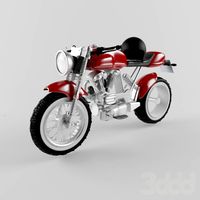
race
...race
3ddd
мотоцикл
race
turbosquid
$15

Racing
...d
royalty free 3d model racing for download as obj and blend on turbosquid: 3d models for games, architecture, videos. (1474846)
3d_export
$5
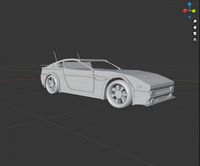
racing car
...racing car
3dexport
racing car
3d_export
$5

racing helmet
...racing helmet
3dexport
helmet 3d model for motocross or racing cars
3d_export
$5
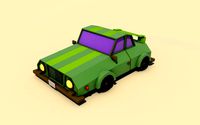
racing car
...racing car
3dexport
low poly classical racing car model
3d_ocean
$29

racing car
...cing car rim seat speed sport sport car tyre
detailed 3d model of racing car. all materials are included. model is ready for use.
3d_ocean
$29
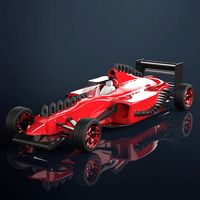
racing car
... rim seat speed spoiler sport sport car tire
detailed 3d model of racing car. all materials are included. model is ready for use.
3d_ocean
$15

Race Car
...race car
3docean
a very detailed and realistic 3d model of a race car, which was created with polygons.
3ddd
$1
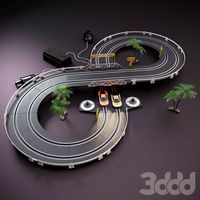
Turbo Racing
... машинка
игрушечная гоночная дорога "turbo racing". почувствуй себя настоящим гонщиком.
3d_export
$100

start race motocross
...start race motocross
3dexport
start race motocross
B
3ddd
$1

B&B
...b&b
3ddd
b&b italia
statue b&b italy
3ddd
$1
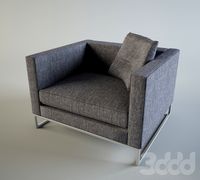
B&B Italia
...b&b italia
3ddd
b&b italia
b&b; italia
3ddd
$1

b&b italia
...b&b italia
3ddd
b&b italia
b&b; italia
3ddd
$1
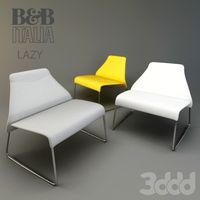
B&B LAZY
...b&b lazy
3ddd
b&b italia
b&b; lazy
3ddd
$1

B&B Italy
...b&b italy
3ddd
b&b italia
диван b&b; italy
3ddd
$1

b&b RAY
...b&b ray
3ddd
b&b italia , угловой
диван b&b; ray
3ddd
$1
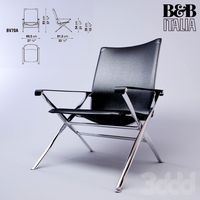
B&B Beverly
... b&b italia , beverly
cтул beverly от b&b.; текстуры в архиве
3ddd
$1

B&B ITALIA
...lia , журнальный , круглый
стол b&b; italia
3ddd
$1

шезлонг B&B
...шезлонг b&b
3ddd
b&b italia , шезлонг
шезлонг b&b; terminal 1
3ddd
$1

B&B J.J
...b&b j.j
3ddd
b&b italia , журнальный
b&b;
j.j
45x40x49 cm
